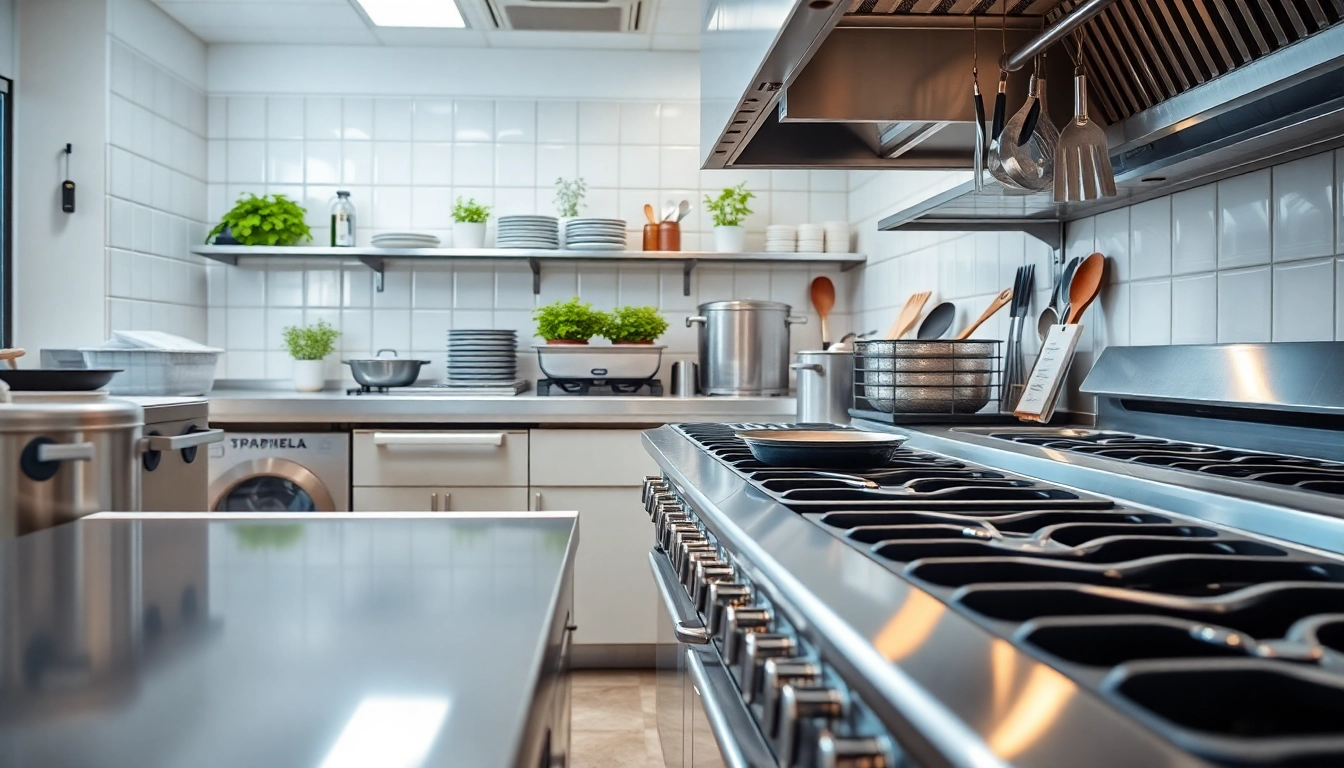Understanding Prep Table Repair
In any commercial kitchen, the prep table is more than just a piece of furniture; it’s an essential component for efficient food preparation, organization, and safety. However, like all kitchen equipment, prep tables can experience wear and tear due to heavy use, leading to the need for repairs. Understanding the nuances of prep table repair is crucial for maintaining these vital fixtures, ensuring they continue to serve their purpose effectively. In this guide, we’ll explore what prep tables are, their significance in the kitchen, common designs, prevalent issues requiring repair, and how to care effectively for them.
What is a Prep Table and Its Importance?
A prep table is a specialized workspace designed for the preparation of food. It’s typically equipped with features that make food prep faster, safer, and more organized. The importance of prep tables in a commercial kitchen cannot be overstated. They help streamline operations, reduce the risk of cross-contamination, and ensure compliance with health regulations.
Moreover, by allowing chefs to have all necessary ingredients and tools within arm’s reach, these tables enhance efficiency during cooking sessions, especially in fast-paced environments like restaurants and catering services. Properly functioning prep tables not only aid in food safety but also contribute to a more pleasant cooking experience.
Common Prep Table Designs
Prep tables come in various designs, sizes, and functionalities, tailored to different food services. Here’s a breakdown of prevalent designs:
- Refrigerated Prep Tables: These tables come with refrigerated compartments to keep ingredients fresh. Ideal for salads, sandwiches, and other applications requiring cold storage.
- Standard Prep Tables: Usually made of stainless steel, these tables provide a flat surface for food prep without refrigeration. Often used for tasks that don’t require temperature control.
- Multi-Compartment Prep Tables: These feature multiple compartments or compartments for different types of ingredients. Commonly utilized in pizza shops and delis, they allow for organized ingredient access.
- Mobile Prep Tables: Equipped with wheels, these tables provide flexibility within the kitchen, allowing chefs to make adjustments based on workflow needs.
Overview of Repair Services
Repairing a prep table can range from simple fixes to complex overhauls. Many professional services offer inspection, cleaning, and repair options tailored to the specific type of prep table. Repairs ensure that the equipment is compliant with health and safety standards, functioning correctly while minimizing downtime in a busy kitchen setting.
Identifying Common Problems
Despite the robust design of most prep tables, several common issues can arise, affecting their performance. Identifying these problems early can save time and costly repairs in the long run.
Temperature Control Failures
One significant issue that arises in refrigerated prep tables is temperature control failure. This may stem from a faulty thermostat, a compressor issue, or improper sealing on door gaskets. For kitchens relying on the freshness of ingredients, maintaining an appropriate temperature is critical.
Symptoms of a temperature control failure include warm air escaping, inconsistent cooling, or visible frost build-up around the unit. If any of these signs appear, it’s essential to diagnose the cause quickly to prevent spoilage of ingredients.
Poor Door Seals Explained
The integrity of door seals plays a vital role in maintaining the internal temperature of refrigerated prep tables. Poor door seals allow cold air to escape and warm air to penetrate, leading to inefficiency in cooling and higher energy bills.
Common indicators of poor door seals are ice accumulation around the door and frost on the interior walls. Regular checks for wear and tear on seals should become part of routine maintenance to avert more significant issues.
Identifying Refrigerant Leaks
Refrigerant leaks can lead to significant operational problems, including rising temperatures and eventual equipment failure. Identifying leaks requires keen observation of both sight and sound; spotting ice accumulation on components or listening for hissing noises can be telling signs.
In the event of a suspected leak, it’s crucial to contact a licensed HVAC technician immediately. Repairing refrigerant leaks often requires specialized knowledge and skills to ensure compliance with environmental regulations concerning refrigerants.
Step-by-Step Repair Process
When a prep table exhibits signs of malfunction, understanding the repair process can facilitate smoother, effective interventions. Below is a structured approach to executing repairs.
Disassembling the Prep Table
Proper disassembly ensures that all components are accessible for inspection and repair. Start by unplugging the unit and emptying the food compartments. Carefully remove panels to access internal components such as the compressor, thermostat, and refrigerant lines. It’s advisable to take pictures during disassembly for guidance during reassembly.
Conducting Necessary Repairs
Once disassembled, conduct a thorough inspection of each component:
- Thermostat: Test for functionality. If the thermostat is defective, replace it with a compatible unit.
- Compressor: Check for noise and functionality. Replacement might be necessary if it’s found to be faulty.
- Door Seals: Inspect the door seals for damage. If they appear worn, remove and replace them with new seals.
- Electrical Connections: Inspect wiring for wear, and ensure all connections are secure.
Reassembly and Testing
After the necessary repairs, reassemble the prep table carefully, reversing the disassembly steps. Ensure all parts are fitted securely. Once assembled, plug the unit back in and run a test to ensure it’s operating correctly. Monitor the temperature for at least an hour to ensure it reaches the desired range.
Best Practices for Maintenance
Proactive maintenance of prep tables can mitigate many of the common issues discussed. Here are some best practices to follow:
Regular Cleaning and Care
Routine cleaning not only preserves the prep table’s appearance but also extends its lifespan. Use a soft, damp cloth to wipe down surfaces daily, and sanitize regularly with appropriate cleaning agents to avoid cross-contamination. Special attention should be given to the gaskets, as food debris can accumulate here, compromising their sealing ability.
Scheduling Professional Inspections
Regular professional inspections can catch issues before they escalate. Having a qualified technician examine your prep table at least bi-annually ensures all components are evaluated for efficiency, and they can provide preventative maintenance suggestions tailored to your kitchen’s operational needs.
Keeping Parts and Tools on Hand
Having essential spare parts such as gaskets, filters, and tools can expedite repairs and minimize downtime in a bustling kitchen environment. Keeping a well-organized storage area for these parts ensures that you can quickly address minor repairs as they arise.
Cost Considerations for Repairs
Understanding the potential costs involved in prep table repairs can assist in budgeting and financial planning for kitchen operations. There are various factors that can influence these costs.
Understanding Repair Estimates
When obtaining repair estimates from service providers, be sure to clarify what the estimate includes. Costs may vary based on the complexity of the issue, labor rates, and parts required. It’s advisable to request itemized estimates that list specific services and parts to prevent unexpected charges.
Long-term Investment Benefits
Investing in regular maintenance and timely repairs can enhance the longevity of your prep tables. Although upfront costs may appear high, the reduction of future repair needs and the improved efficiency of well-maintained equipment can lead to significant savings in the long run.
When to Replace Instead of Repair
Sometimes, it may be more cost-effective to replace a prep table rather than investing in repairs. Indicators that replacement might be necessary include:
- Recurrent issues despite repairs.
- Significant rust or structural damage.
- Obsolete technology that impacts efficiency.
Weighing the costs of repair against the cost of a new unit will provide a clearer picture and help make an informed decision.




